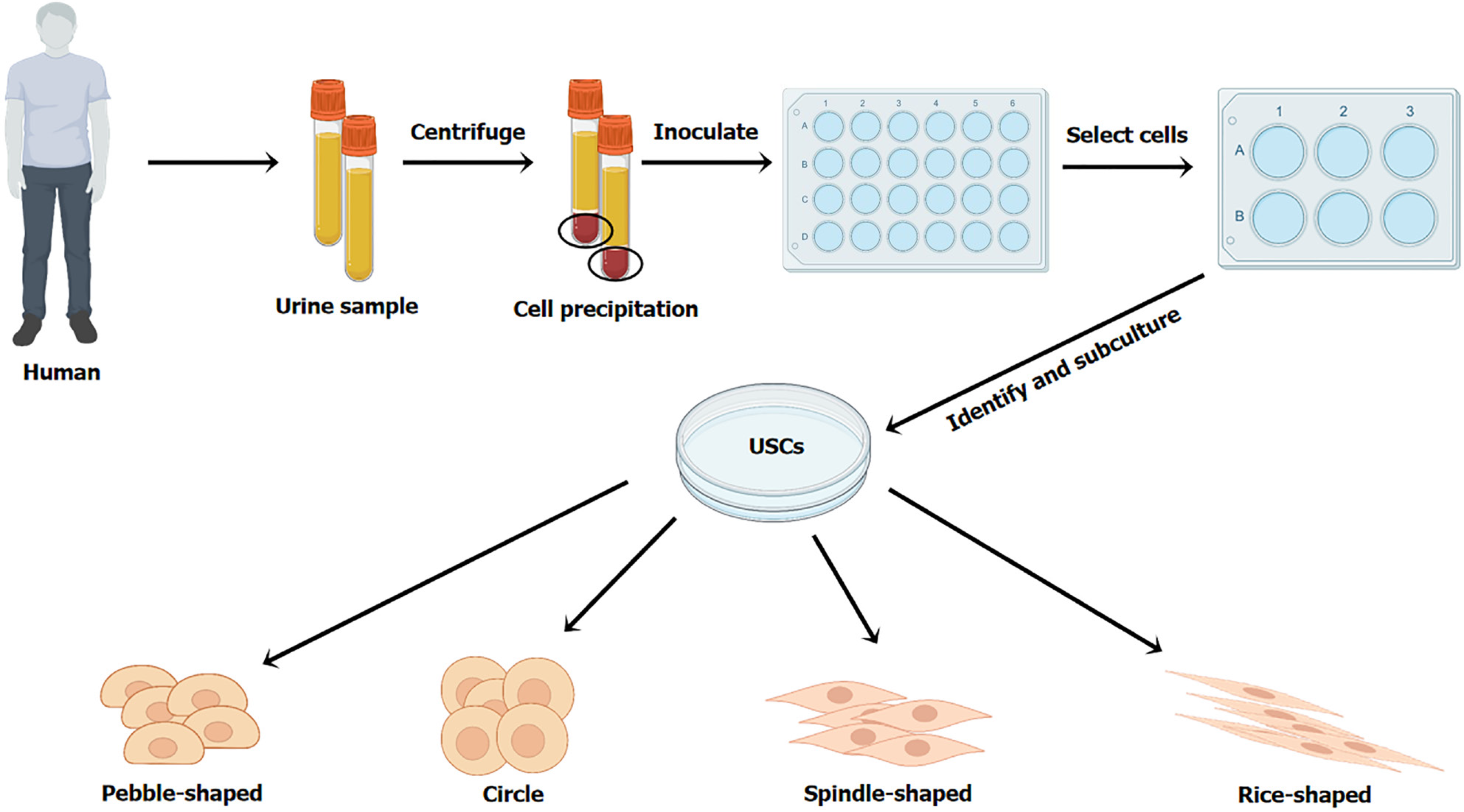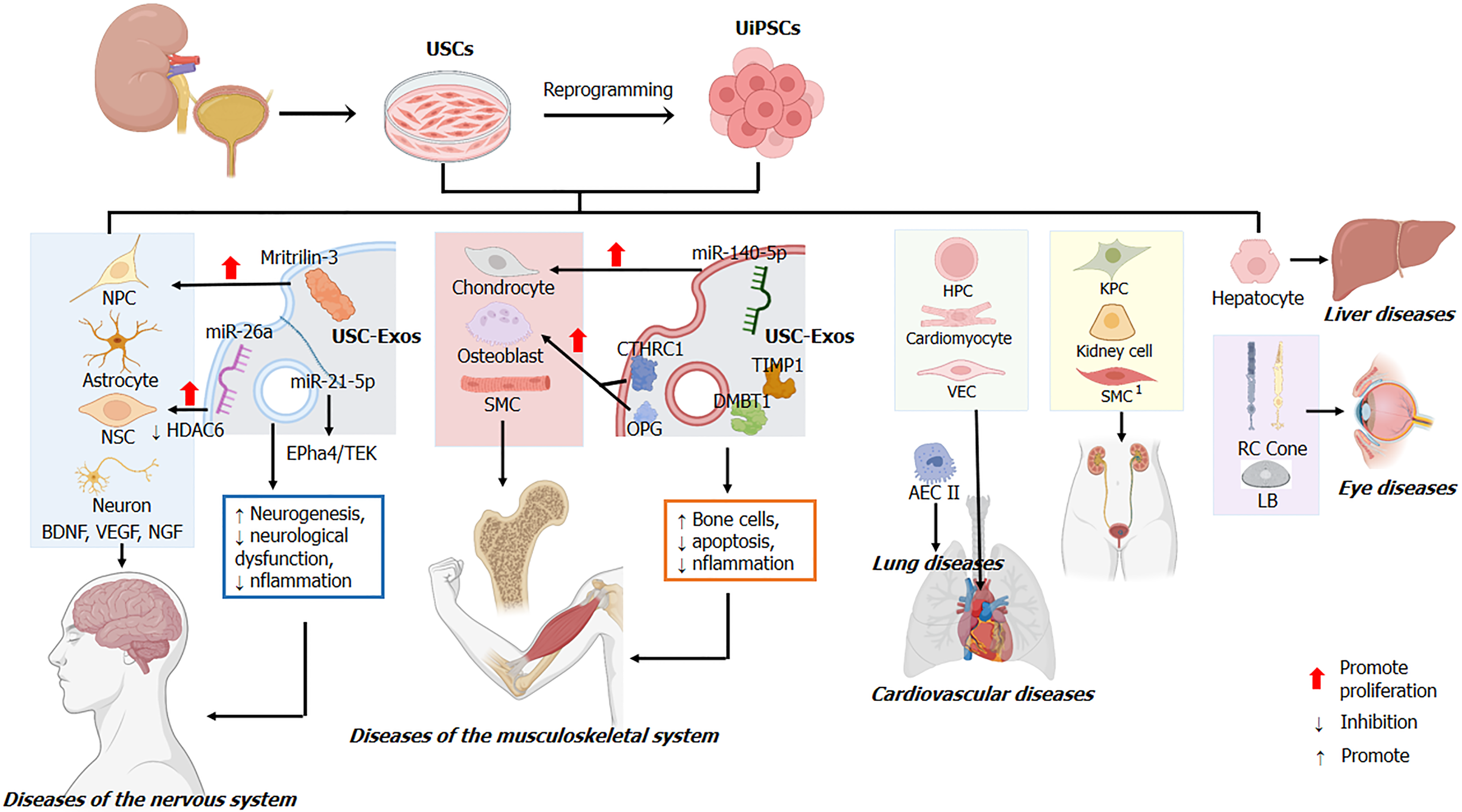Copyright
©The Author(s) 2024.
World J Orthop. Oct 18, 2024; 15(10): 918-931
Published online Oct 18, 2024. doi: 10.5312/wjo.v15.i10.918
Published online Oct 18, 2024. doi: 10.5312/wjo.v15.i10.918
Figure 1 Schematic diagram of obtaining urine-derived stem cells and their morphology.
After collecting urine samples, cell precipitation is obtained by low-speed centrifugation. Then cells are resuspended with specific culture medium and inoculated in a 24-well plate. Next, appropriate cell clone spheres are selected and inoculated in a 6-well plate. Finally, spheres are identified and sub-cultivated. Urine-derived stem cells (USCs) can present as the shapes of rice, spindle, circle, and pebble.
Figure 2 Therapeutic application of urine-derived stem cells and urine-derived induced pluripotent stem cells and the underlying mechanisms.
Urine-derived stem cells (USCs) and urine-derived induced pluripotent stem cells (UiPSCs) exert the therapeutic effects mainly through the targeted differentiation of desired cells (including neurocytes, osteoblasts, chondrocytes, muscle cells, adipocytes, vascular endothelial cells, lentoid body, alveolar type II epithelial cells, and hepatocytes) and their exosomes (carrying small molecules such as nucleic acids, proteins, lipids, cytokines, and others). AEC II: Alveolar type II epithelial cell; BDNF: Brain-derived neurotrophic factor; DMBT1: Deleted in malignant brain tumors 1; EPha4/TEK: Ephrin receptor a4/TEK receptor tyrosine kinase axis; HDAC6: The inhibition of histone deacetylase 6; HPC: Hematopoietic progenitor cells; KPC: Kidney progenitor cell; LB: Lentoid body; miR: MicroRNA; NGF: Nerve growth factor; NPC: Neural progenitor cell; NSC: Neural stem cell; RC: Rod cell; SMC: Skeletal muscle cell; SMC1: Smooth muscle cell; TIMP1: Tissue inhibitor of metalloproteinases 1; VEC: Vascular endothelial cell; VEGF: Vascular endothelial growth factor.
- Citation: Yang HS, Zheng YX, Bai X, He XY, Wang TH. Application prospects of urine-derived stem cells in neurological and musculoskeletal diseases. World J Orthop 2024; 15(10): 918-931
- URL: https://www.wjgnet.com/2218-5836/full/v15/i10/918.htm
- DOI: https://dx.doi.org/10.5312/wjo.v15.i10.918














